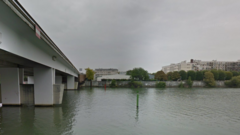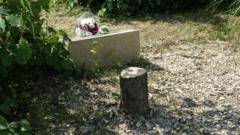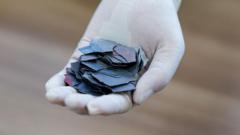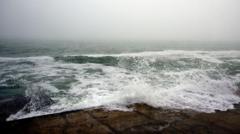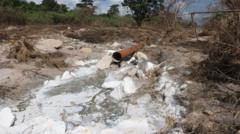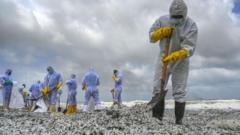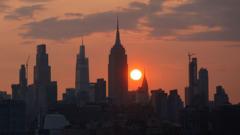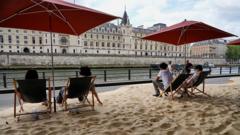For the first time in a century, Parisians and visitors can now swim in the River Seine, marking a significant moment in the lead-up to the 2024 Olympics. This long-anticipated reopening comes after extensive efforts to clean the river, which had been closed to swimming since 1923 due to pollution concerns.
River Seine Welcomes Swimmers Again After 100-Year Hiatus
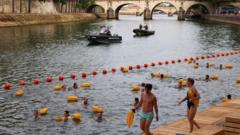
River Seine Welcomes Swimmers Again After 100-Year Hiatus
Historic reopening coincides with preparations for the Paris 2024 Olympic Games.
The River Seine officially opened for swimming on Saturday at 08:00 local time, with a few dozen eager swimmers diving into the refreshed waters. This reopening is part of the legacy of the upcoming Paris Olympics, where open water events will take place in these very waters, now deemed safe after rigorous cleaning efforts.
Three designated swimming zones have been established in critical locations across the city, including one near the iconic Eiffel Tower, another adjacent to Notre Dame Cathedral, and a third in the eastern part of Paris. Each area is equipped with changing rooms, showers, and beach-style amenities for visitors, allowing around 300 people to enjoy the riverfront comfortably. Access to these swimming spots is free and open to anyone aged 10 or older, with lifeguards on-site to ensure safety until the end of August.
The journey to lifting the swimming ban began in 1988 when then-mayor Jacques Chirac championed the cause. Over the last two decades, substantial investments and initiatives have notably reduced pollution levels in the river. Leading up to the Olympic Games, more than €1.4 billion was poured into further revitalizing the Seine, although concerns surfaced earlier this summer when water quality tests failed due to rainfall and pollution spikes.
In a bid to assure the public and showcase the cleanliness of the Seine, Mayor Anne Hidalgo, along with members of the Olympic committee, braved a swim in the river last summer. This bold move aimed to emphasize the river's readiness for future athletes and swimmers alike, transforming the Seine into a safe and enjoyable venue for both local residents and international visitors in the lead-up to the 2024 Olympics.
Three designated swimming zones have been established in critical locations across the city, including one near the iconic Eiffel Tower, another adjacent to Notre Dame Cathedral, and a third in the eastern part of Paris. Each area is equipped with changing rooms, showers, and beach-style amenities for visitors, allowing around 300 people to enjoy the riverfront comfortably. Access to these swimming spots is free and open to anyone aged 10 or older, with lifeguards on-site to ensure safety until the end of August.
The journey to lifting the swimming ban began in 1988 when then-mayor Jacques Chirac championed the cause. Over the last two decades, substantial investments and initiatives have notably reduced pollution levels in the river. Leading up to the Olympic Games, more than €1.4 billion was poured into further revitalizing the Seine, although concerns surfaced earlier this summer when water quality tests failed due to rainfall and pollution spikes.
In a bid to assure the public and showcase the cleanliness of the Seine, Mayor Anne Hidalgo, along with members of the Olympic committee, braved a swim in the river last summer. This bold move aimed to emphasize the river's readiness for future athletes and swimmers alike, transforming the Seine into a safe and enjoyable venue for both local residents and international visitors in the lead-up to the 2024 Olympics.


